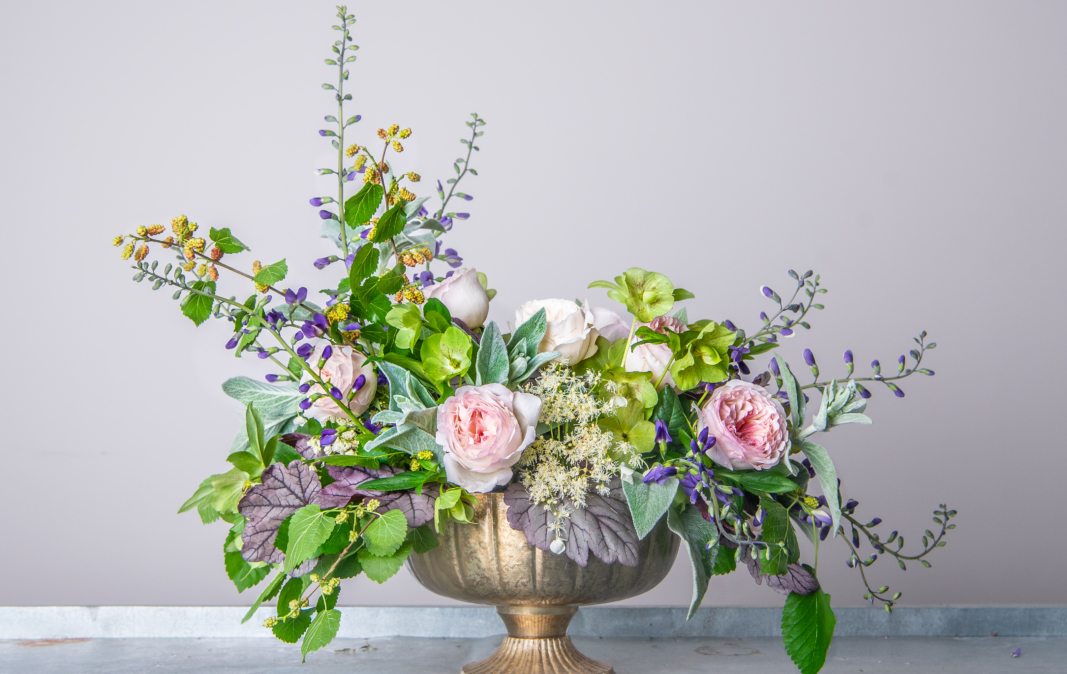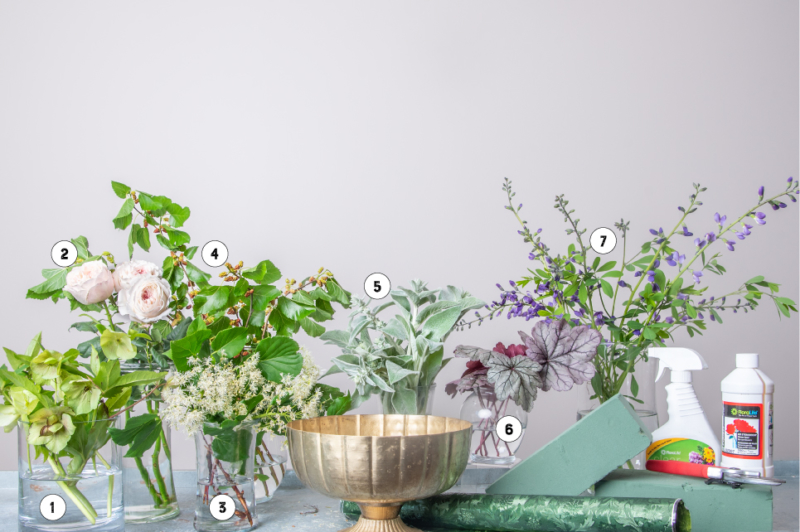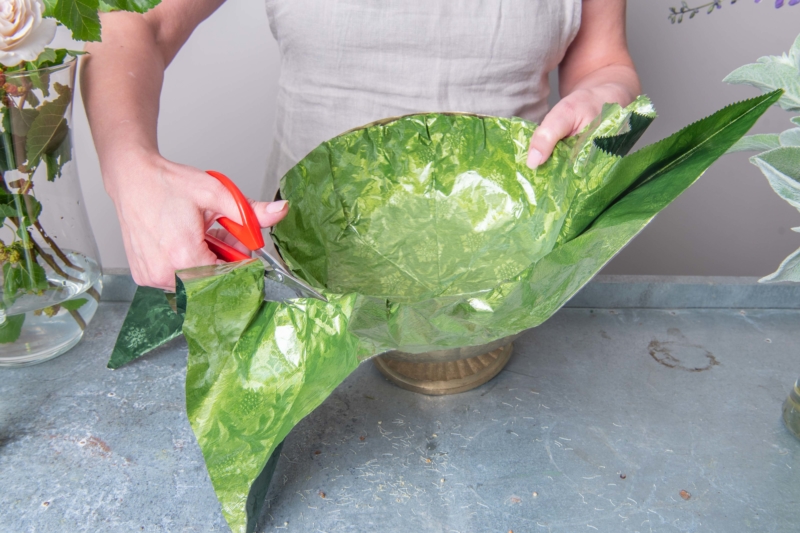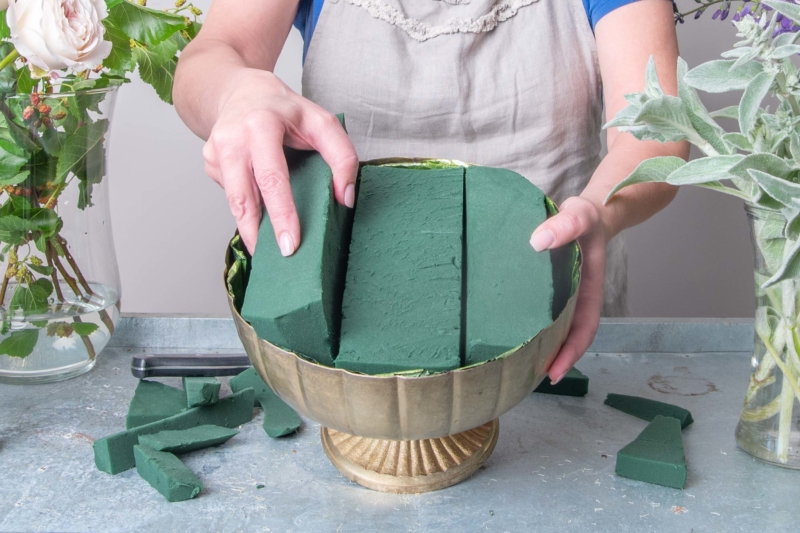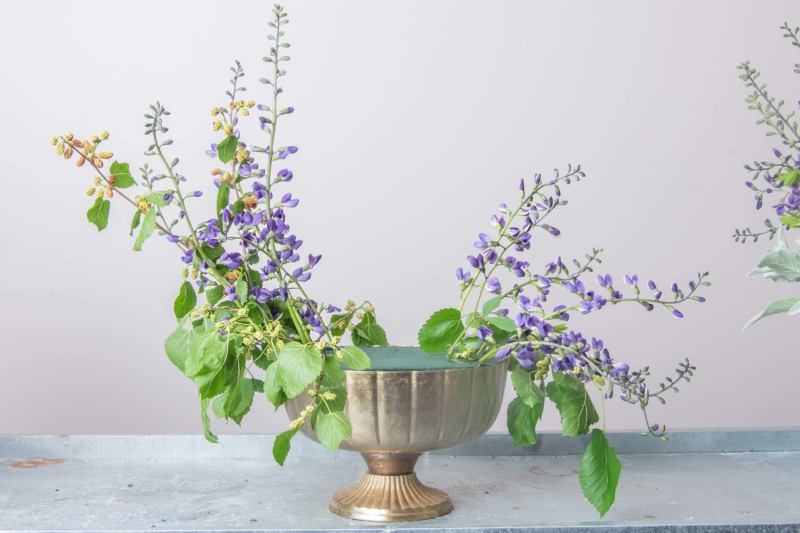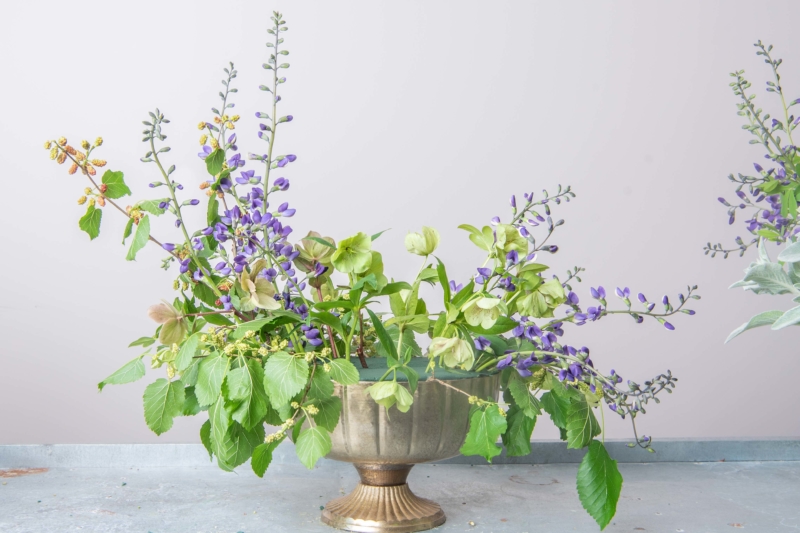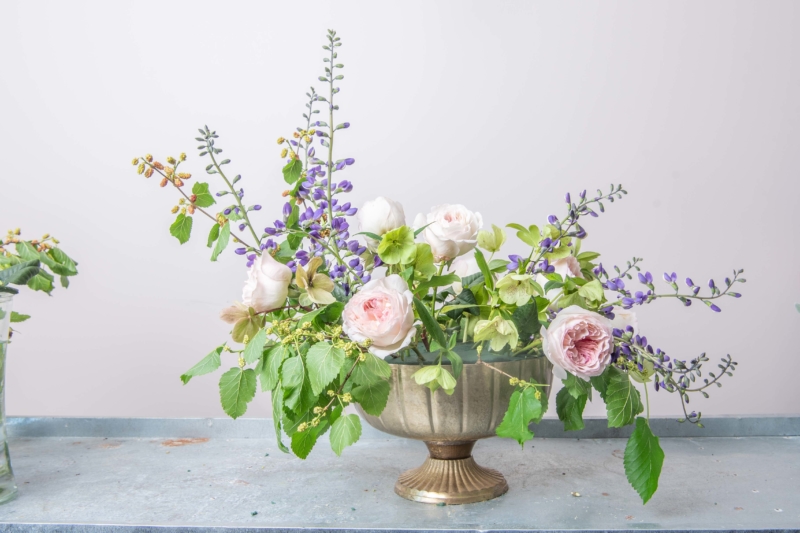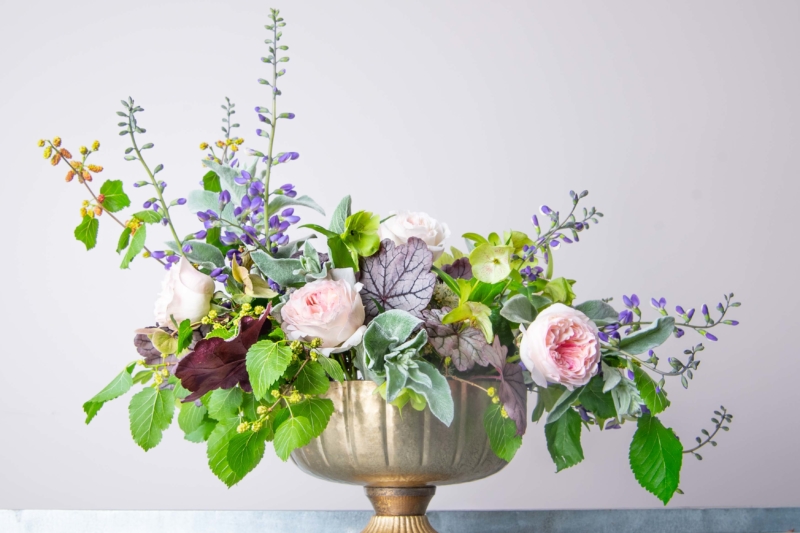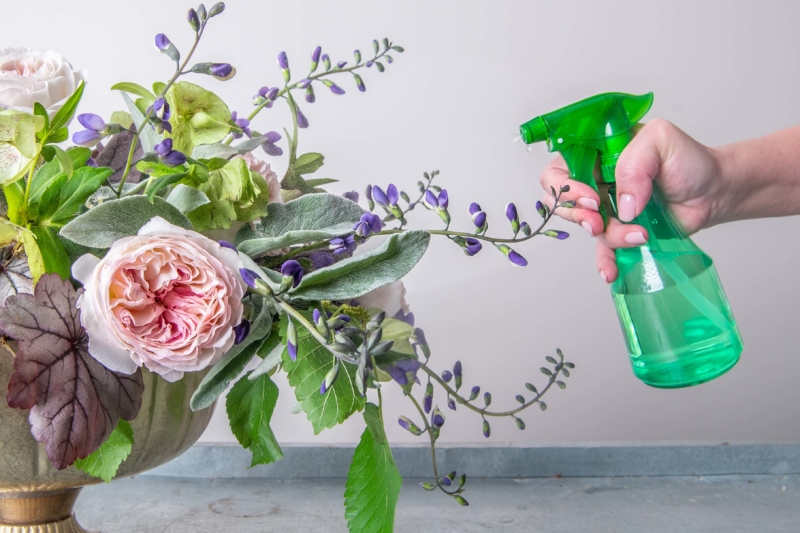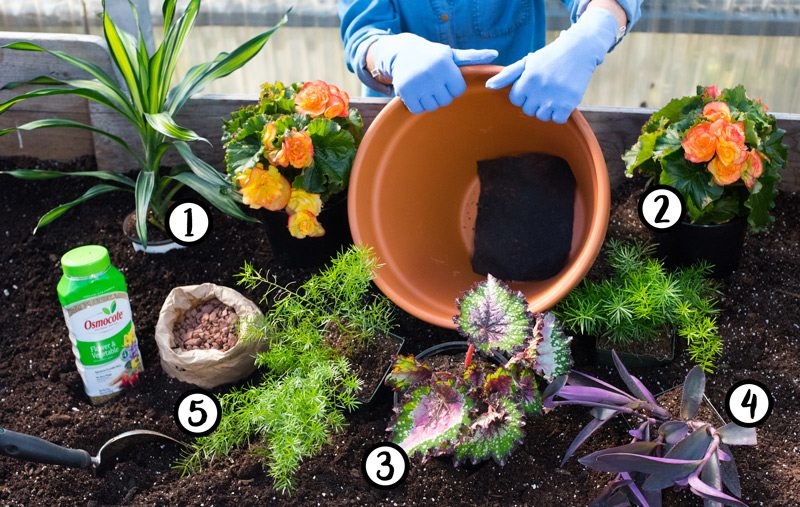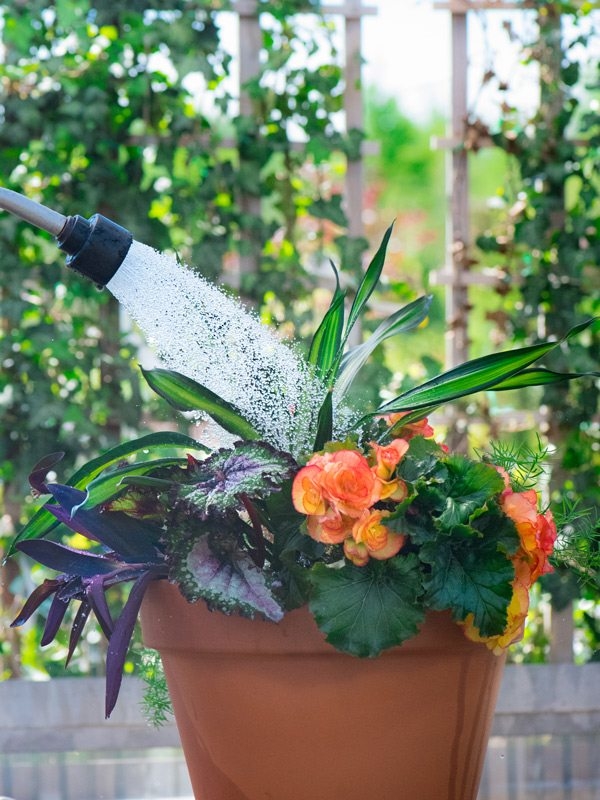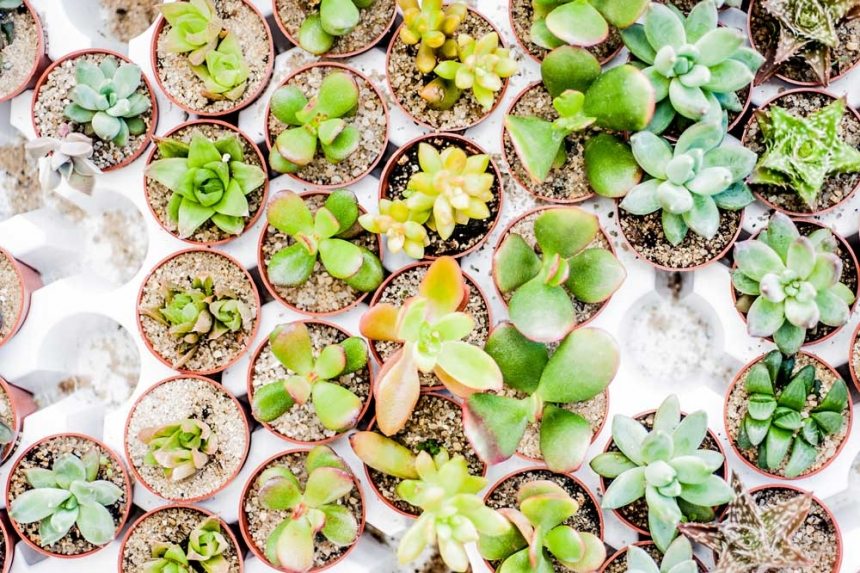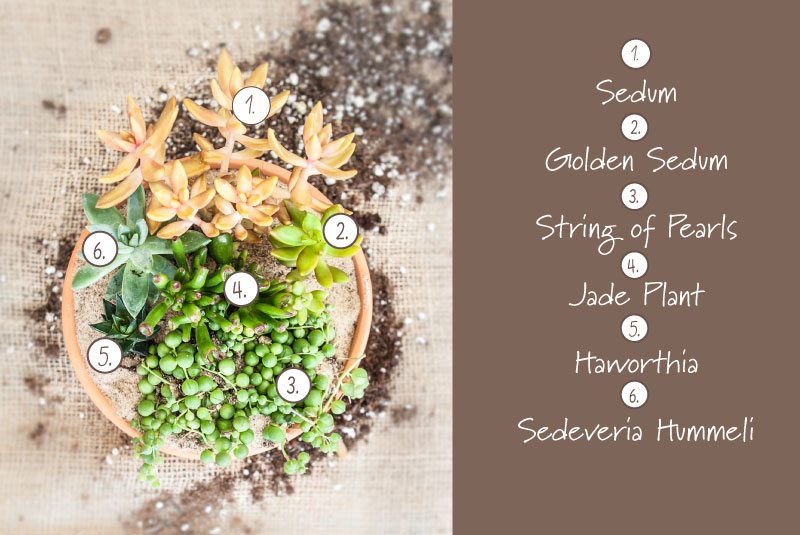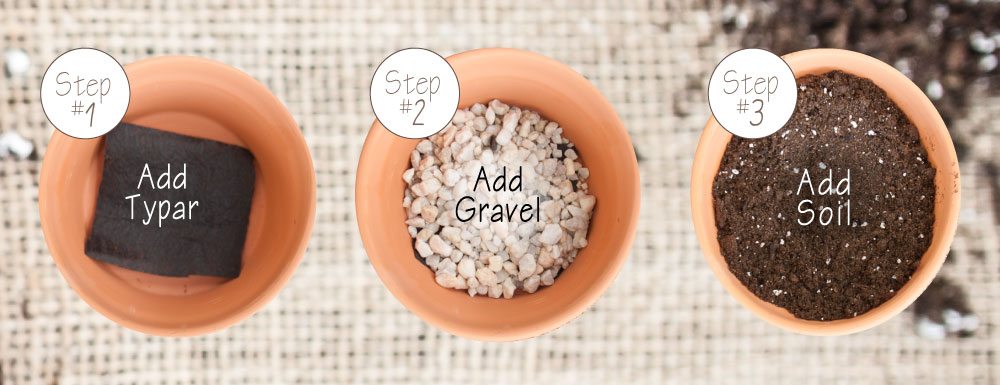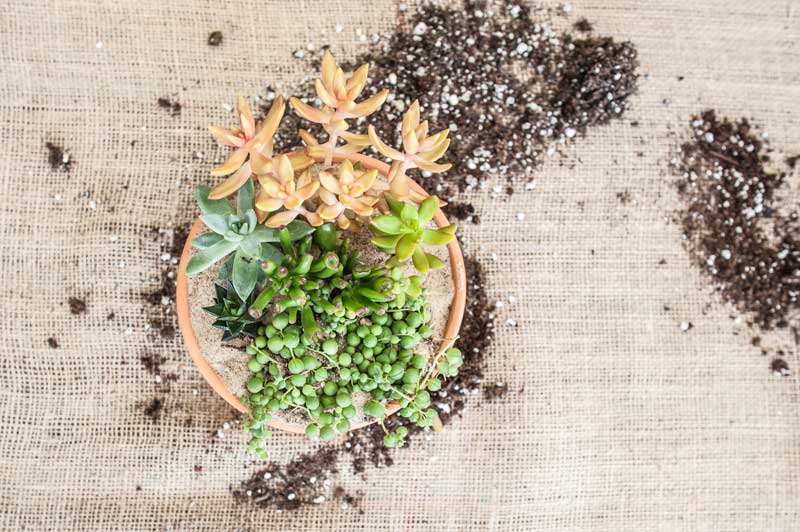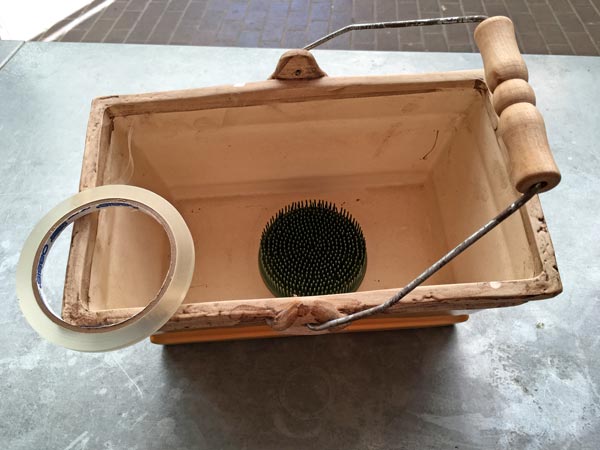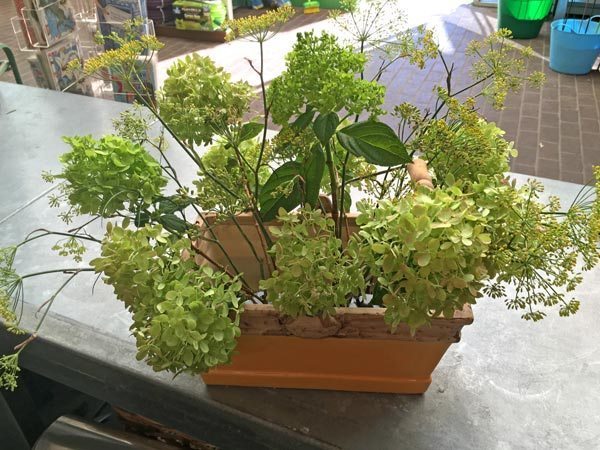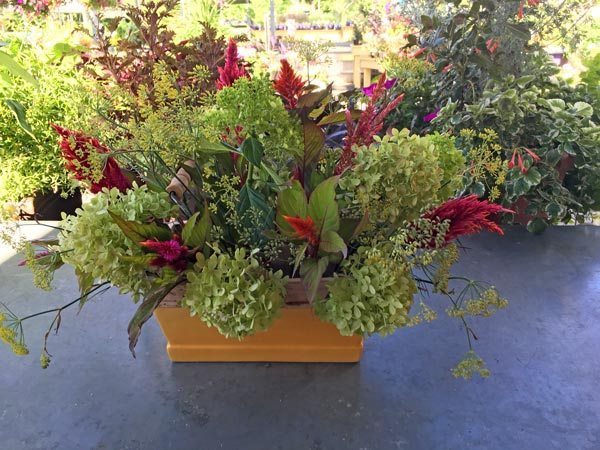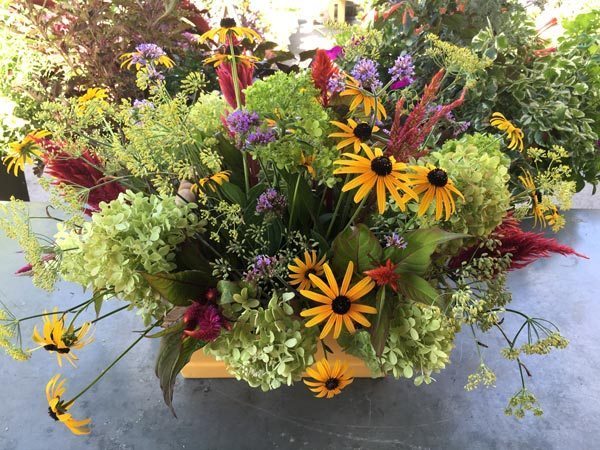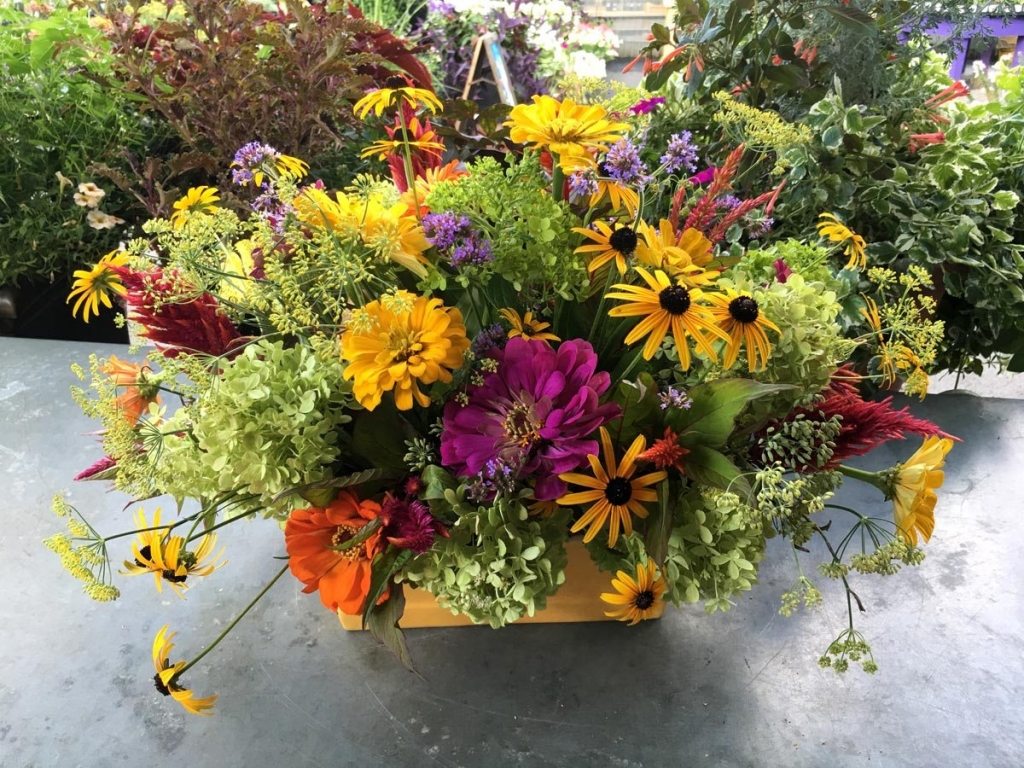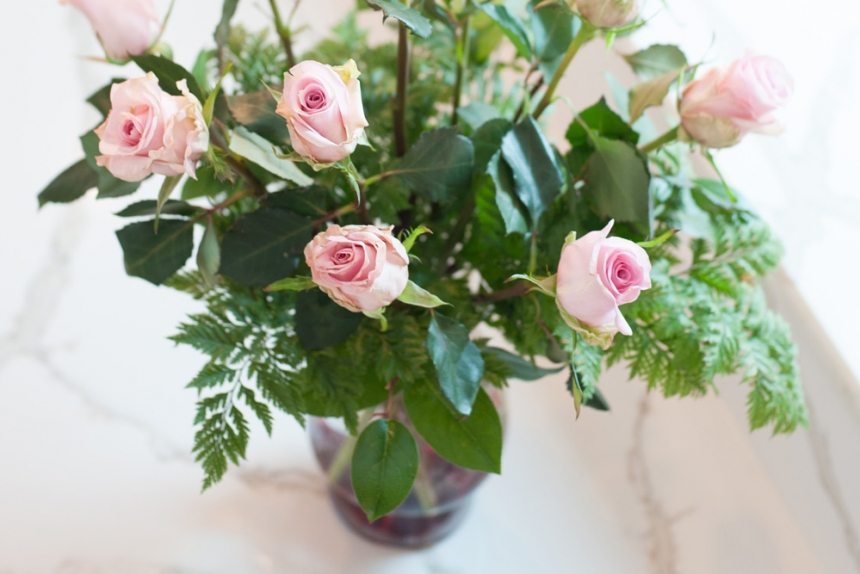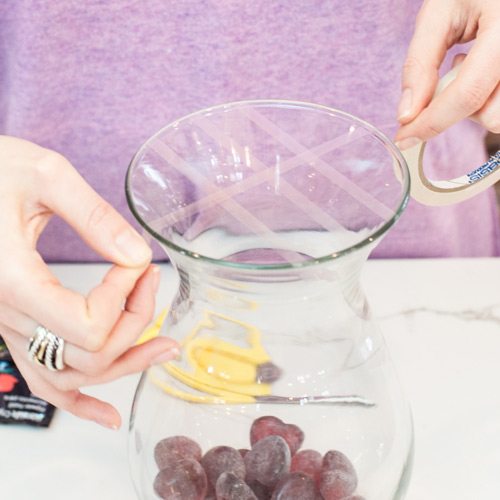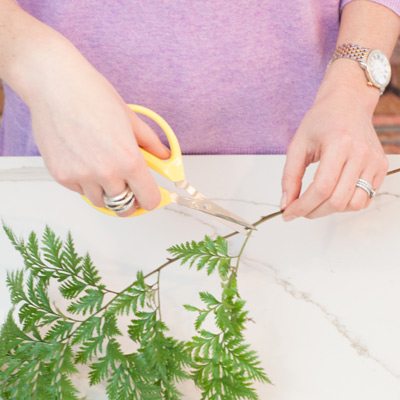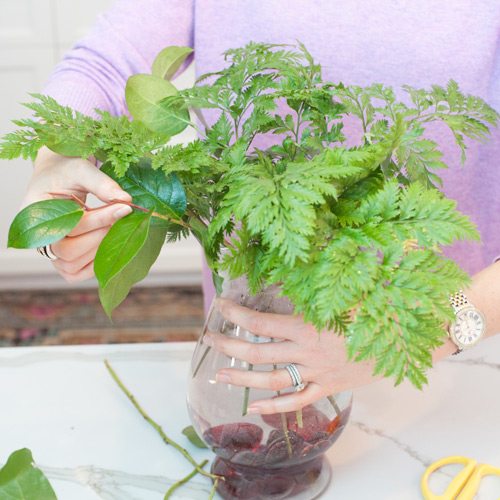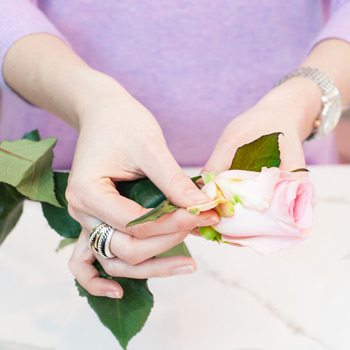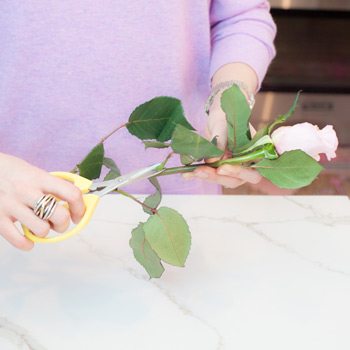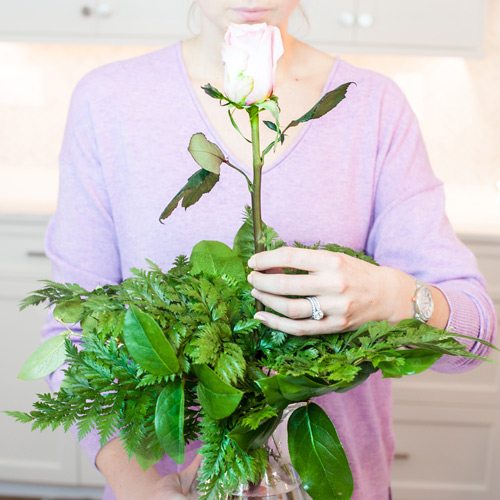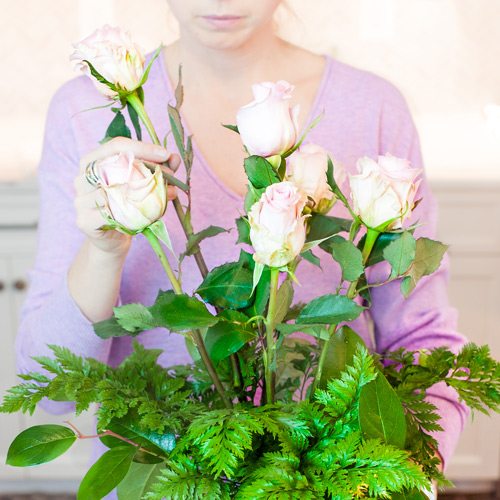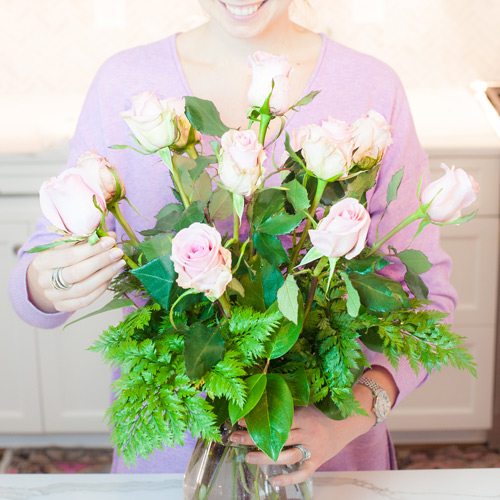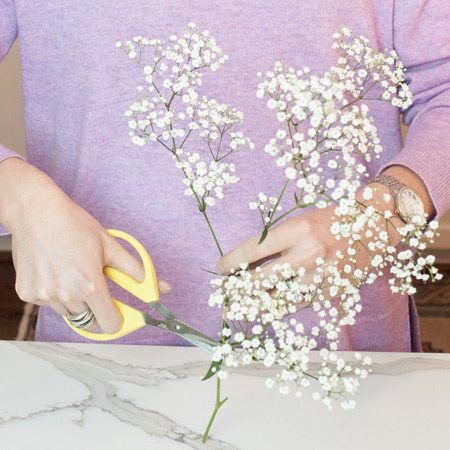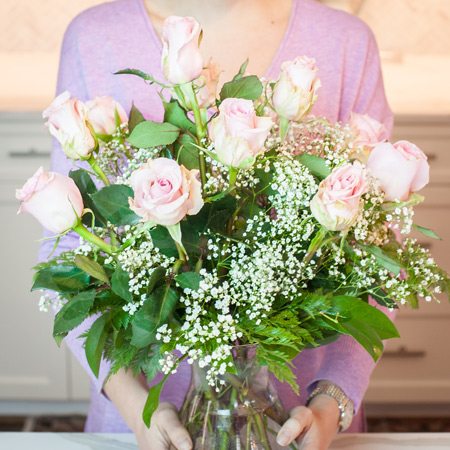Create Your Own Fresh-Cut Floral Arrangement
Fresh flower arrangements are a wonderful way to bring the outdoors in and transform your space seasonally with fresh blooms and greens. This step-by-step guide covers spring blooms, but you can use the guidelines to select and arrange flowers from any season in a beautiful arrangement for your home.
What You Need
Blooms, Branches and Greenery
- Linear blooms and branches (we used mulberry-4, and baptisia-7)
- Fill greenery (we used hellebores-1, heuchera-6, climbing hydrangea-3, and lambs ear-5)
- Focal flowers (we used garden roses-2)
Supplies
- Decorative vessel of your choice (for a table centerpiece, the vessel should be about 1/6 the diameter or length of the table)
- Floral foil or heavy-duty aluminum foil
- Oasis or floral design tape
- Two to three buckets/containers filled with warm water (you can use anything large enough to hold all your cut plants)
- Floral food
- Pruners
- Floralife Clear Crowning Glory® spray
Step One: Select Your Vessel and Flowers
When arranging flowers for a dining table centerpiece, the maximum length of the full arrangement should be about a third of the table’s length. An appropriately sized vessel will be one-third of this measurement, or a sixth of the overall table length. Of course, this is not a requirement! Select a vessel and arrangement size that suits your taste and decor, and line it with floral foil or a heavy duty aluminum foil to protect your vessel.
Select plants from your garden to enjoy indoors, or visit your local florist for flowers. Choose plants in good condition with healthy foliage. Flowers should have just opened or be in bud form.
If you are cutting stems from your own garden, bring your bucket of warm water with you if possible, and cut your flowers from the garden in the morning when the weather is cooler. The heat later in the day can shock cut stems and cause them to wilt. After cutting your stems, put them in your warm water with floral food right away. The floral food controls bacteria levels and assists the stems with the absorption of water.
If you can’t bring a bucket of warm water outside to the garden with you, re-cut your stems an inch above your cut line before placing them in warm water inside. Leave the clipped flowers in the warm water with the floral food for about 30 minutes to give the stems time to condition.
Step Two: Prepare the Oasis
Cut your oasis block to a size that fits your vessel shape without compressing the oasis. A compressed oasis will not hold water, so this is an important step to ensure your arrangement lasts.
After sizing your oasis, soak it in water and floral food for 30 minutes using a bucket or sink, then place it in the vessel.
Step Three: Arrange Structural Blooms
Place your branches or structural blooms, in our case mulberry and baptisia, to create the lines and overall movement for your arrangement. It’s best to begin with the highest point first. Keep in mind the viewpoint from which your arrangement will be enjoyed when deciding where your flowers should go. Some arrangements will be viewed from all sides, while others may be against a wall and only visible from 3 sides.
Step Four: Place Greens and Fill Flowers
Using your filler greens (the hellebores in this arrangement), start around the perimeter or your arrangement and move inwards as you place them to fill in the overall shape. Keep it light, and avoid overcrowding so that room remains for the focal flowers. You can always go back and add more as desired after placing the focal flowers.
Step Five: Place Your Focal Flowers
When placing your focal flowers (garden roses in this arrangement), think in triangles. Triangular shapes provide dimension and keep your eye moving throughout the arrangement. You want to avoid having your focal flowers make a line.
Step Six: Hide the mechanics
Using complementary fill flowers or greenery (heuchera, lambs ear, and climbing hydrangea in this arrangement), hide the oasis, floral tape, and other ‘mechanics’ of the floral arrangement and highlight your focal flowers.
Step Seven: Preserve Your Arrangement
When your arrangement is complete, spray it with Crowning Glory preservative. This helps the plants hold in moisture, keeping flowers more vibrant.
To keep your arrangement fresh for as long as possible, flush the arrangement with water every other day and keep out of direct sunlight.
To flush the arrangement, place the vessel in the sink with water entering just inside the edge of the vessel, and leave the water running for a few minutes. The force of the running water will push out the old water and any floating debris out of your container. We recommend flushing the water at night so you can leave it to drip dry overnight.
If you make your own Fresh Cut Arrangement using these instructions, we would love to see it! Please share on Instagram and tag @merrifieldgardencenter for a chance to be featured on our page


